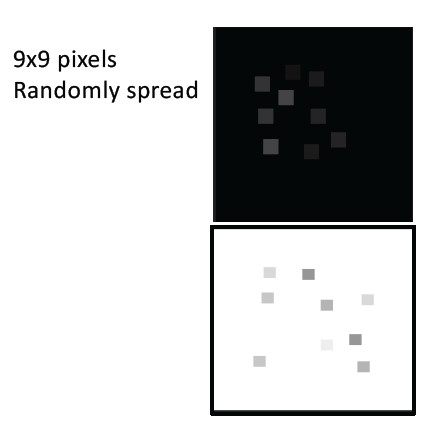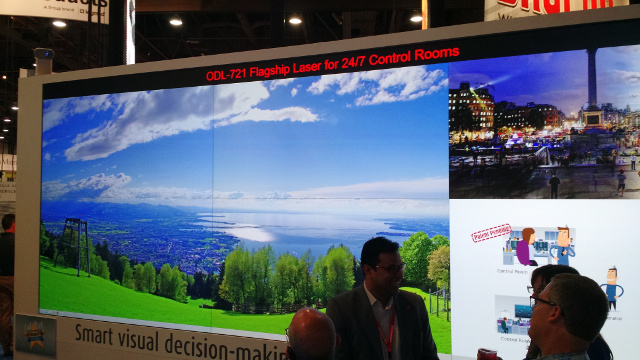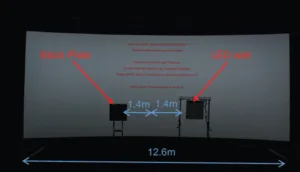Last year, Barco presented a contrast model for the cinema that predicted real contrast values taking into account the projector, screen, and environment. They concluded that one starts to see diminishing returns in creating a cinema projector with more than 10K:1 or 20K:1 – and questioning the value of the 1M:1 contrast of a Dolby Cinema projector. This year, they provided an update to this work by providing results of a study using 36 people who evaluated various types of content in a theatrical environment.
Tom Bert gave the paper for his colleague Goran Stojmenovik, who could not attend the SMPTE conference. The paper first recapped the previous work noting that the model suggested there are practical limitations to the achievable “room contrast” that is impacted by the exit lights, scattering in the projector optics and port hole glass, and reflections from the wall, ceiling, floor and patrons.
To better understand what range of luminance levels can actually be perceived in a theater, and to understand how light adaption of the human eye plays a role, Barco produced a series of test images for participants to judge. The goal was to present images over a range from 0.002 cd/m² to 7000 cd/m².
Since this is not possible with current projection technology, two displays were used. One was a projector-black matte painted MDF plate (good to 0.0008 cd/m²) and the other an LED video wall with a diffuser (good to 5000 cd/m²). The set up in a dark cinema theater is shown in the photo.
For the black plate, a series of square gray level patches were randomly projected with a range of luminance levels centered in the darkest ranges. The background gray level was then varied between black, 0.5% and 5% of the projector’s maximum luminance. The idea was to mimic the eye’s adaption to various average picture levels. The LED wall was run in the off position, 50% and 100% luminance. In this mode, the test patches were varied from full on, left half on and right half on. This was to test the influence of highlights and their luminance, area and position.
To test the ability to discern highlights, the LED wall was used to show patches at various luminance levels. The background LED luminance varied from 50 to 4000 cd/m², after the diffuser.
In the experiment, people were asked to count the number of squares that were visible in each test condition. The 36 participants had an average age of 23.5 and were equally weighted between men and women, and their visual abilities were checked.

The results were quite interesting and are summarized in the Table below. With the LED off, even small increases in the average picture level (background in the experiment) can raise the minimum detectable black level considerably, effectively decreasing the dynamic range of that frame. With the LED on, the minimum detectable black level rises even higher, as expected.

However, in real theaters the screen is not black, as in the experiment. According to Barco’s contrast model, an average theater will create a black level of around 0.007 cd/m² – close to the lowest detectable level from their human studies. But when an image is presented with an average picture level of 2.5 cd/m² (5.2% average picture level for a movie graded at 14fL), the minimum detectable black level rises to 0.07 cd/m² – much higher than what the participants detected in the experiment. That is the effect of the screen, room reflections and scattering.
They concluded that “an ideal projector can deliver a black level below the average perception threshold up till a gray background level of 0.6 cd/m² in a best case theatre environment, in a worst case theatre environment the black level will exceed the average perception threshold as soon as the gray background level is higher than 0.2 cd/m².” Those are quite low average picture levels, which means viewers will perceive an extended dynamic range only when dark images are presented.
The dynamic range is further compromised for scenes with higher average picture levels or bright highlights. However, viewers were able to see bright highlights up to 96% of the 4000 cd/m² stimulus.
The tests suggest that the black levels rise very rapidly with any non–dark content, so there is not much reason to have very high contrast and supporting the original idea. More research and testing will be done. CC

